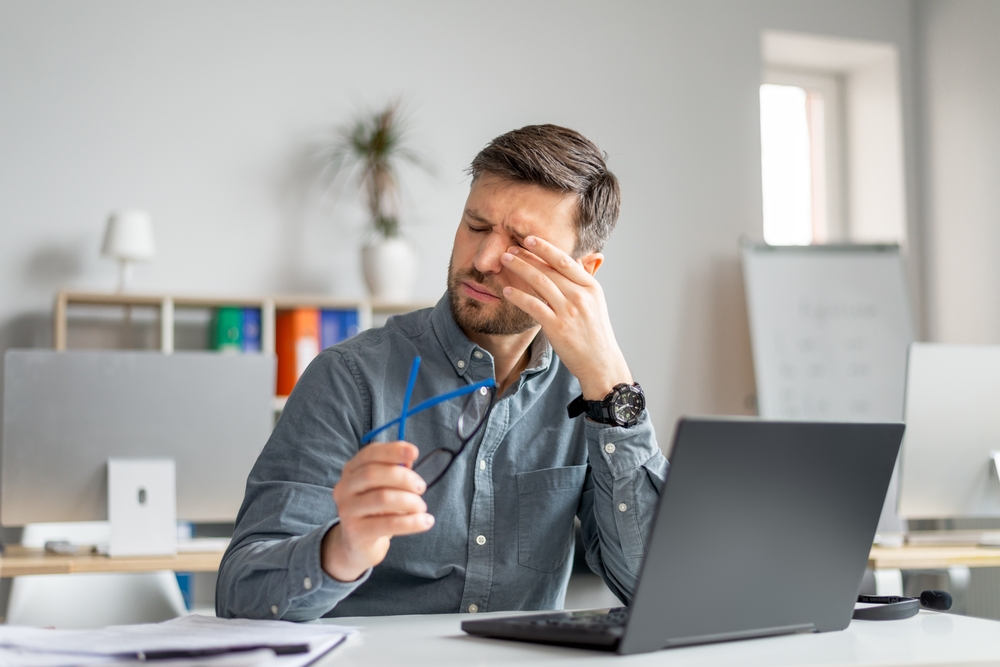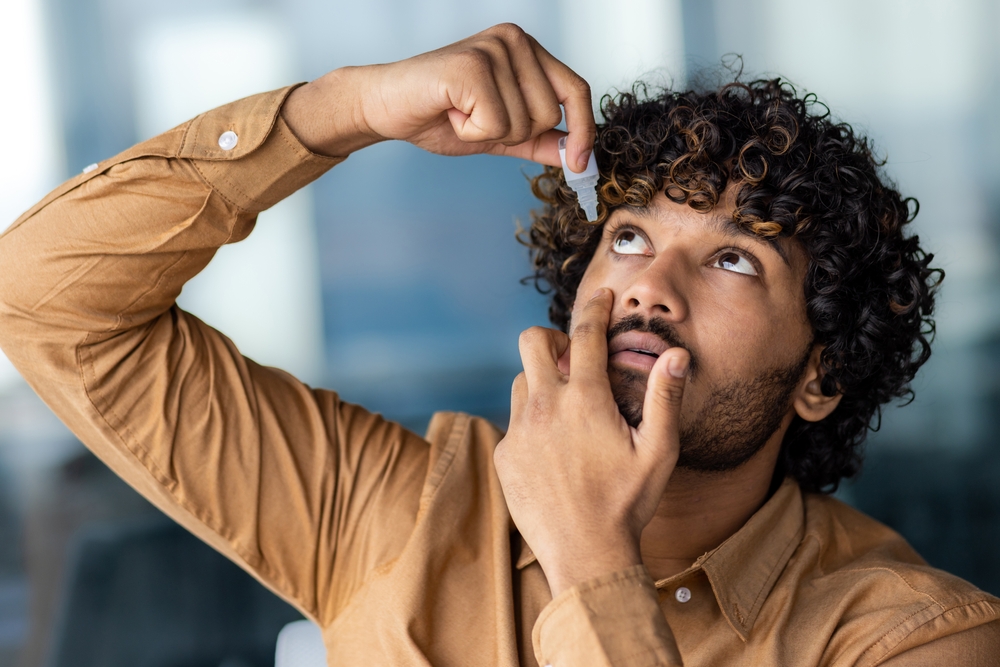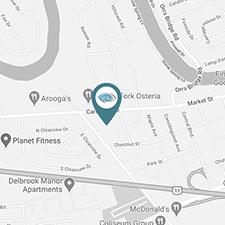Do your eyes burn or sting at the end of the day? Are they noticeably red a lot of the time?
Do they feel sticky or like there is something stuck in them? If these symptoms sound familiar, you may be among the millions who suffer from dry eyes.
Dry eyes occur when the eyes do not produce enough healthy tears to keep them comfortably moist. You should treat dry eyes to alleviate discomfort and preserve clear vision. Keep reading to find out why dry eyes require treatment and what that means for resolving your symptoms.
What Causes Dry Eye?

Most people experience dry eyes due to occupational or environmental factors. This type of dry eye is considered mild, usually temporary, and responds almost immediately to treatment.
The causes of mild dry eyes include:
- Dry indoor air from a heater, air conditioner, or humidifier
- Looking at an electronic screen for long periods
- Wearing contact lenses
- Use of certain medications, including antihistamines, diuretics, and birth control pills
- Hormonal changes during pregnancy or menopause
If you’re not affected by occupational or environmental factors and have dry eyes, it could be because of dry eye syndrome. This chronic eye condition occurs when your eyes do not produce high-quality tears to keep them lubricated. You may also produce tears, but they are of poor quality and cannot sufficiently lubricate and moisturize the surface of the eye.
High-quality, or healthy, tears consist of three layers: the lipid (oil) layer, the aqueous (water) layer, and the mucin layer. A healthy tear must contain enough layers to keep eyes comfortable and functioning correctly. If any of these components are missing from the tear film, you may notice symptoms of dry eye syndrome.
Some patients may experience dry eye syndrome due to aging. As your eyes age, they produce tears that have less of the oils and mucin that keep your eye moist.
Dry eye syndrome can also be caused by meibomian gland dysfunction (MGD), which causes a deficiency of lipids in the tears. The meibomian glands are oil glands along the edge of the eyelid where the eyelashes are found.
Some less common causes of dry eye syndrome are chronic health conditions, including Sjogren’s Syndrome, rheumatoid arthritis, lupus, scleroderma, thyroid disorders, vitamin A deficiencies, and corneal nerve damage.
The Risks of Untreated Dry Eye
No matter what causes your dry eyes, if left untreated, they can compromise your vision and threaten overall eye health. While the effects may be minor at first, with symptoms like eye discomfort, sensitivity to light, and redness, dry eyes can interfere with daily activities such as reading, using an electronic device, or driving a car.
Over time, leaving your dry eyes untreated can lead to more severe issues. These include:
Corneal Damage
Without adequate lubrication, the cornea can become inflamed, eroded, or ulcerated, leading to pain, scarring, and vision loss.
Increased Risk of Eye Infection
Tears are essential for protecting the eyes from infections, so a lack of tears can make your eyes more vulnerable to viral or bacterial infections.
Visual Disturbances
Not treating your dry eyes and always having dry, gritty eyes can result in issues with visual clarity, like blurred or distorted vision.
Get relief from your dry eyes
How Do You Treat Dry Eyes?

The most effective treatments for dry eyes depend on the root cause of your dry eyes. While some treatments can relieve the symptoms caused by mild dry eyes, people diagnosed with dry eye syndrome might need more intensive treatments.
Treatments for mild dry eyes most commonly include lubricating or tear-boosting eye drops and lifestyle changes. These treatments can provide fast relief.
Eye Drops
Lubricating eye drops restore moisture by replacing the eye’s natural tears. Eye drops to treat dry eyes should contain lipid or oil-based lubricants to make tears oilier and prevent evaporation.
Another good eye drop option is one advertised as hypotonic or hypo-osmolar. This type of eye drop aims to increase the volume of tears in the eyes.
Many eye drops that effectively treat dry eyes are available over the counter at your drugstore. Prescription eye drops may be necessary in some cases if you’re not getting relief from over-the-counter drops.
Lifestyle Changes

Making specific lifestyle changes and using lubricating eye drops can often be an effective treatment for dry eyes.
These changes include:
- Taking frequent breaks to blink when using an electronic device
- Avoiding exposure to dry air blown from hairdryers, car vents, and air conditioners
- Limiting time spent in smoky environments
- Always wearing sunglasses to protect your eyes from harmful UV light
- Using a humidifier in your home or office
- Staying hydrated
- Limiting contact lens use
Because “screen time” is increasingly the most common cause of dry eye, many eye doctors advise following the “20-20-20 Rule.” To follow this sensible rule, you look up at an object at least 20′ away for at least 20 seconds every 20 minutes while in front of an electronic screen.
While following the 20-20-20 rule, you should also take a few minutes to blink and put in eye drops if your eyes feel dry or irritated.
Other Treatments
If your dry eyes are caused by dry eye syndrome, eye drops may help, but for real relief, your eye doctor may suggest a surgical treatment. These treatments include closing tear drainage canals and inserting ocular plugs, both of which reduce tear drainage.
If dry eyes are affecting the health of your eyes and the quality of your vision, you should seek treatment as soon as possible. Your eye doctor can accurately diagnose the cause of your dry eyes and offer effective treatments that restore comfortable vision.
Do you have dry eyes and need relief? Schedule your appointment at Memorial Eye Institute in Harrisburg and Camp Hill, PA, to start your journey to dry eye improvement!



